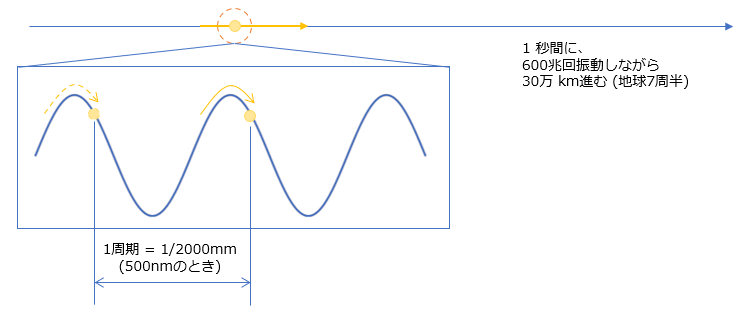Hello. Did you have any problems with optics or light?
This page describes “geometrical optics” and “sequential ray tracing” that you will always see and hear when you start using OpticStudio.
Conclusion
- Geometrical optics is a method of predicting the behavior of light. Considering light as a light ray (geometry), using methods to solve graphic problems.
- Sequential ray tracing is a method of ray tracing in which the order of the optical planes on which the rays reach is predetermined.
- Geometrical optics and sequential ray tracing can predict the behavior of light at high speed and with high accuracy, and are mainly used in the optical design of imaging systems.
How to use this page
The technical article (knowledge base) referenced on this page is Exploring Sequential Mode in OpticStudio. This article describes how to configure the optics in OpticStudio’s sequential mode and the basics of imaging optics.
It contains useful content for both those who are already involved in optics work and those who are learning optics in the future. On this page, we will add a step-by-step explanation of the optical terms, technical terms, and prerequisites used in the knowledge base.
Explanation on basic optical terms
This page refers to the Introdution paragraph. The terminology used in the article is explained. I hope our situation will change from “I understand the meaning somehow, but it is difficult to explain to other people” to “aside from the details, this is the point.”
Geometrical Optics
Meaning of geometrical optics
There are two major ways to predict (calculate) the behavior of light. “Geometrical optics” and “wave optics”. When we want to predict the behavior of light, we often introduce some premises to handle the complex phenomena. These two have different “premise”. We need to decide which one to use according to what we want to predict. OpticStudio is basically geometrical optics-based software.
Geometry is “a study of thinking about graphic problems”. The graphic problem is, for example, a problem in which the length, angle, and area of the rectangle are calculated. Therefore, geometrical optics means “a method of predicting the behavior of light in a way that solves a graphic problem (geometry)”.
Geometrical optics uses the premise (≈ approximation) that “light can be represented by straight lines (rays)”. As an image, light are regarded as a collection of one incredibly small grain, and the locus of movement of each grain is drawn by a line. Figure 2-1 that you often see shows only three trajectories that emitted from one typical point in the object plane.

It’s easy to understand so far, but there is another important premise. That is, the individual particles of light do not interfere with each other. In other words, “do not interfere” means that it has no effect and is independent. For example, even in a situation where rays intersect in space, the rays do not bend or weaken, and the rays proceed ignoring each other’s existence. This assumption may be empirically acceptable. In fact, even if we shine the flashlights facing each other, the lights do not collide with each other and scatter.

As summary, geometrical optics is a concept (assumed) with the following characteristics.
(1) Predict the behavior of light as a figure problem (geometry problem)
(2) Express light with lines (rays) of the trajectory of flying particles.
(3) The rays do not affect each other, and each ray can be calculated independently.
When geometrical optics is useful
Geometrical optics uses a stronger approximation (often ignored) than wave optics. The big difference is that it ignores its wave nature. Therefore, it means that the prediction result can be obtained with no problem if the “condition in which the nature of the wave does not appear remarkably”.
In a nutshell, the condition is that the size of the optical system is sufficiently larger than the wavelength [1]. It’s a fluffy expression that it’s big enough. Assuming that the wavelength is 500 nm, multiplying it by 10,000 makes it 5 mm, which gives a feeling of size that can be treated as a lens diameter. For 100 to 1,000 times, ignoring the nature of the wave and using only geometrical optics may lead to unexpected results. Is it possible to avoid a fatal error if it exceeds 10,000 times?
This condition is only about the size of the optical system (aperture, lens diameter). Another study is required for the analysis of microfabricated surfaces such as diffraction gratings and the focusing points of optical systems with well-corrected aberrations. These will be explained at another time.
Wavelength and frequency
Geometrical optics ignores the wave nature of light. The wavelength of light is about 500 nm (nanometer, nano is 10 -9), that means the distance traveled during one vibration is 1/2000 of 1 mm. Converting this to frequency, it is about 600 THz (terahertz, hertz is a unit indicating the number of vibrations per second, T tera is 10 ^ 12, 1,000,000,000,000), it becomes a wave that vibrates 600 trillion times per second. The frequency is at a level that is not well understood too. In geometrical optics, it is assumed (≈ approximation) that the wavelength is much shorter, that is, the frequency is much higher.

Sequential Raytracing
Meaning of sequential ray tracing
The meaning of “sequential ray tracing” is to predict (= tracing) the way light particles travel (= ray) in a predetermined order by calculation. The important thing is the “predetermined order”.
- “Who”, “what order”, “how” was decided ↓ ↓
- It is decided by “the user of OpticStudio”, “the surface that the ray will reach next”, and “numbering and arranging”.
When sequential ray tracing is useful
It’s time to do so-called “optical design”. When you are doing optical design, countless number of design proposals are created. Each time, the trajectory of a large amount of light rays passing through the optical system is calculated. A feature of sequential ray tracing was that the order of the optical planes to be traced was fixed.
The rays emitted from the surface A are incident on the surface B. After adjusting the state (direction, intensity) of the rays according to the optical characteristics (shape or refractive index) of the surface B, they are emitted toward the surface C. Sequential ray tracing is a repetition of this and does not consider any other path. In this way, the amount of calculation is reduced by narrowing down the path through which the light beam travels to the utmost limit.

In addition, the sequential mode has more functions to analyze optical performance than the non-sequential mode. It also includes tolerance analysis, which is mentioned in the article. This rich analysis functions are realized by narrowing down the path through which the rays travels to the utmost limit. It is not impossible to obtain the same analysis result in non-sequential mode, but it requires considerable resources just to obtain the characteristics of the traced ray.
OpticStudio also has “non-sequential ray tracing,” which is a companion to sequential ray tracing. We’ll talk about non-sequential ray tracing at another time.
Summary
In this page, I explained the meaning and usage of the words “geometrical optics” and “sequential ray tracing” that appear in the introduction, from the public article that can be accessed from Zemax.
Next, I continue to refer to the same article, then I want to pick up the “imaging optical system” that is a little troublesome when trying to explain to other people and add an explanation think.



コメント